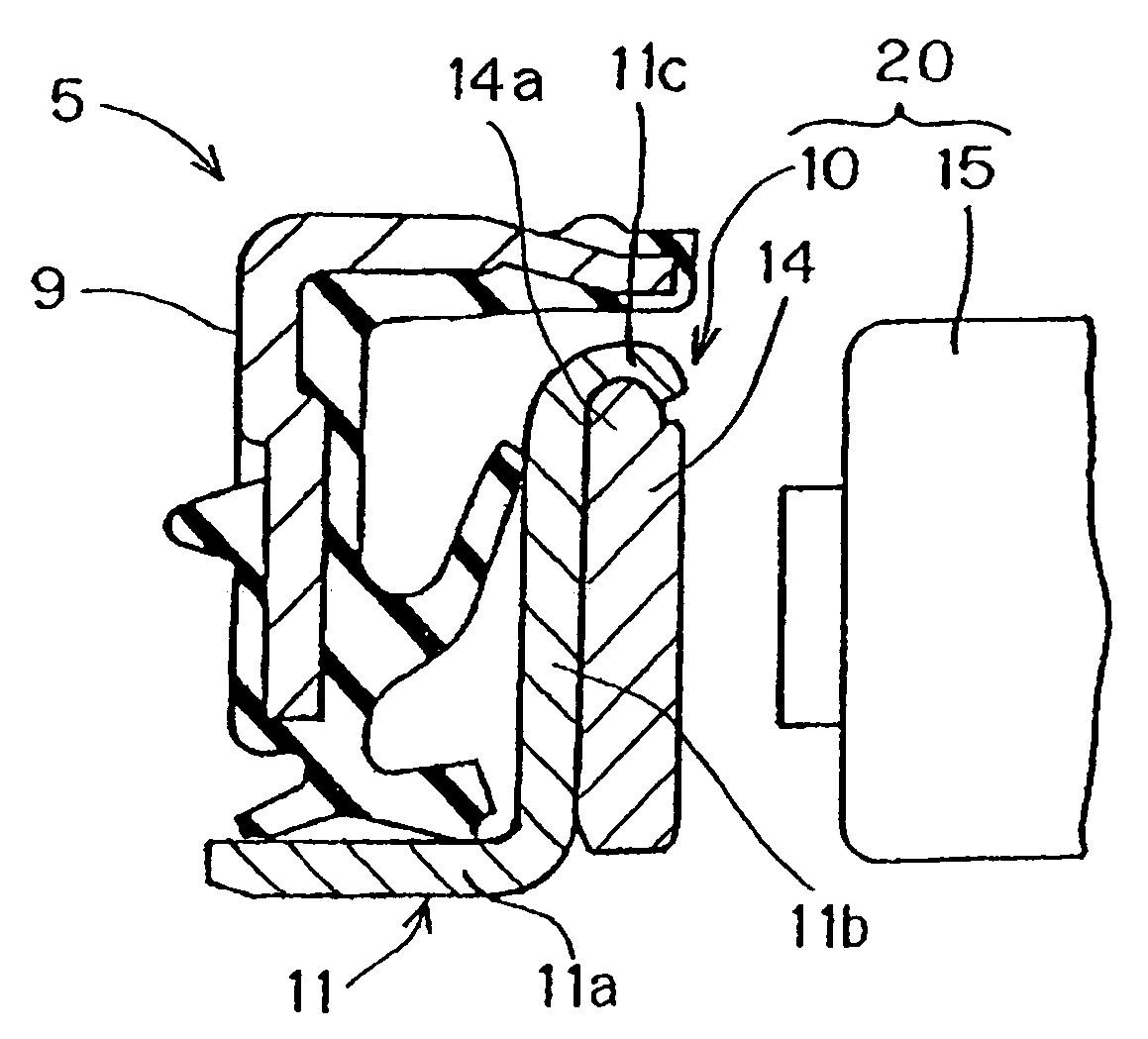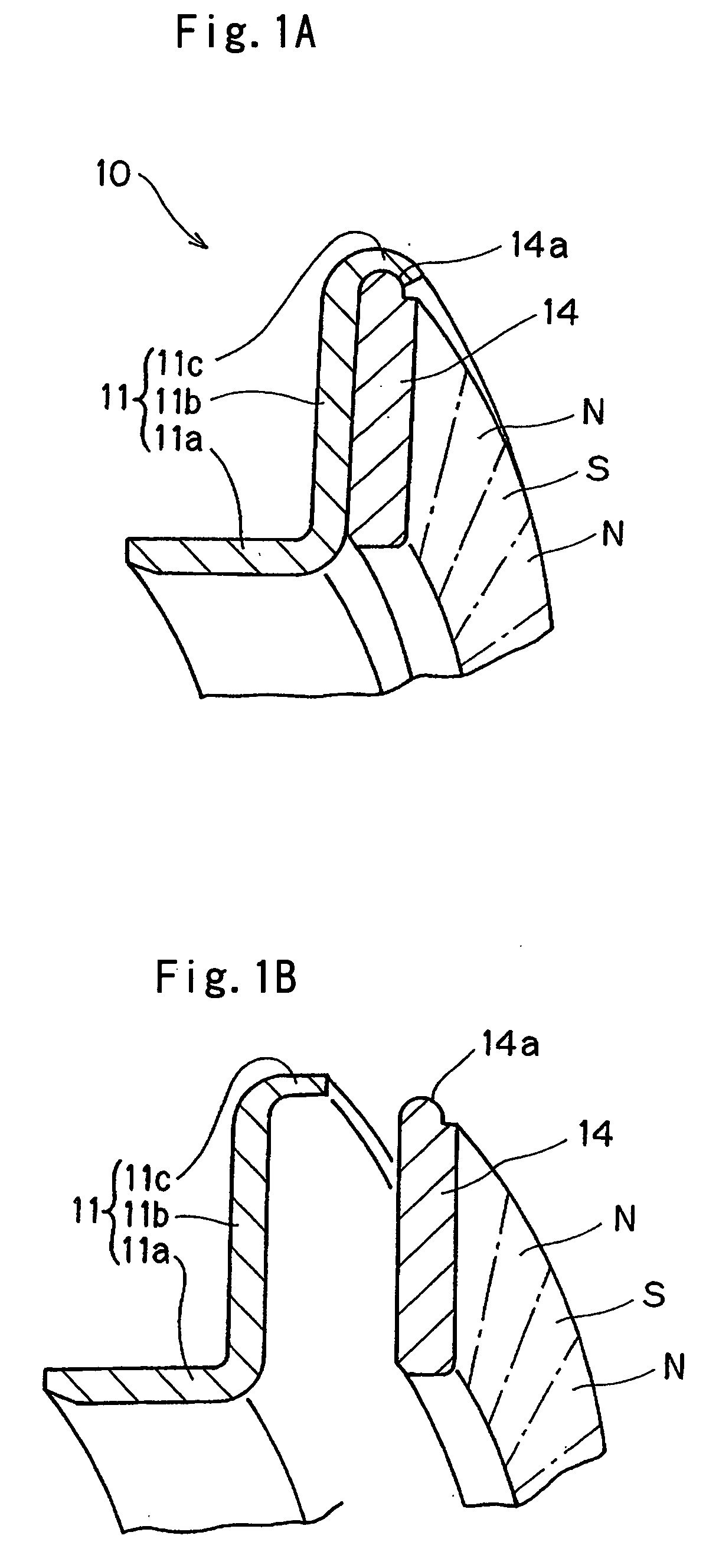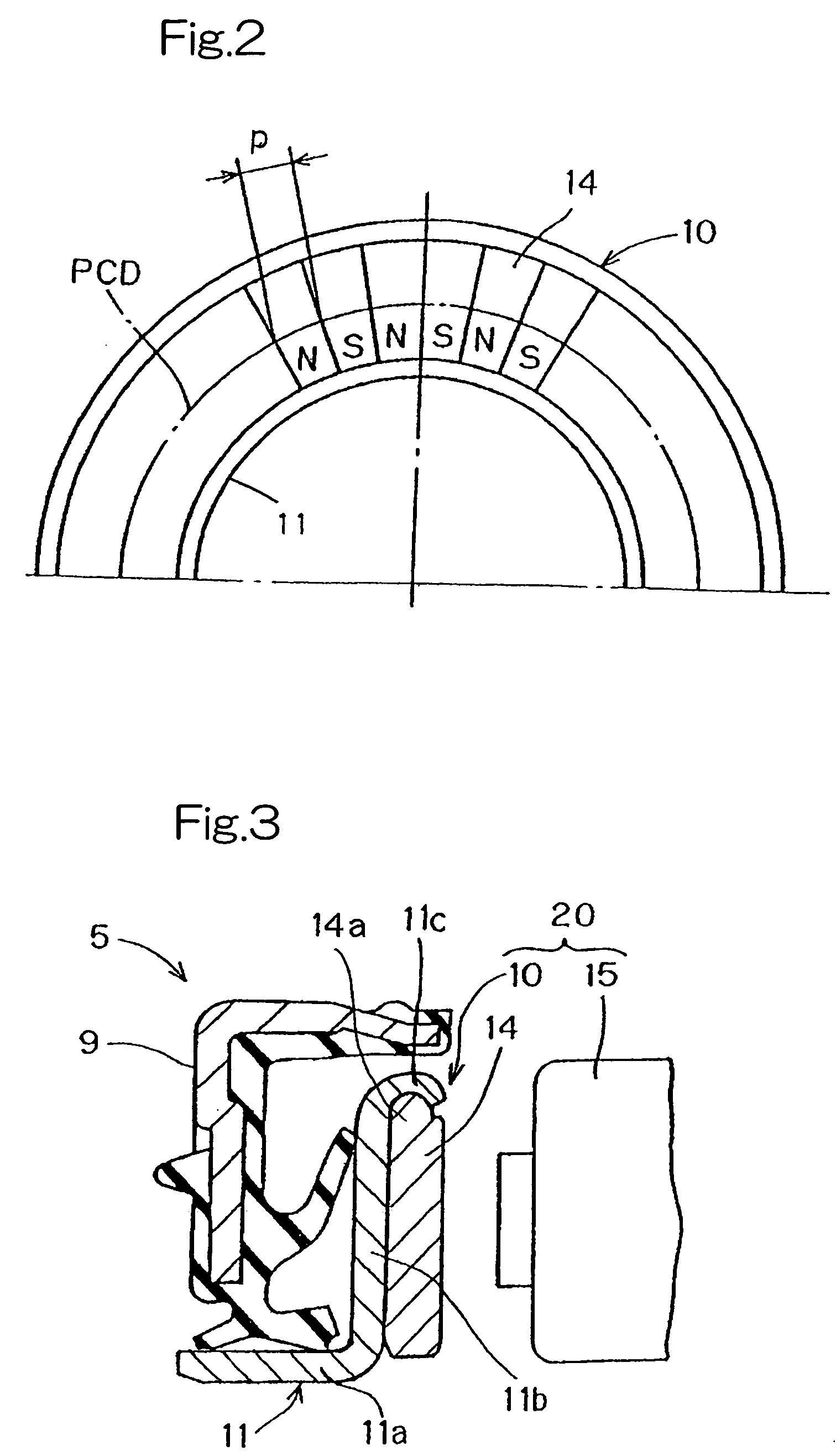Magnetic encoder and wheel support bearing assembly using the same
a technology of magnetic encoder and bearing assembly, which is applied in the direction of magnets, magnet bodies, instruments, etc., can solve the problems of affecting the quality of the magnetic material used in the processing machine, the sensitivity of the processing machine to be damaged, and the amount of powdery rare earth magnetic material to be blended cannot be increased
- Summary
- Abstract
- Description
- Claims
- Application Information
AI Technical Summary
Benefits of technology
Problems solved by technology
Method used
Image
Examples
Embodiment Construction
[0055] Referring first to FIGS. 1A to 3, there is shown a magnetic encoder 10 according to a first preferred embodiment of the present invention. The magnetic encoder 10 shown therein includes an annular core metal 11 made of a metallic material and an annular multi-pole magnet 14 secured to an annular surface of the core metal 11 so as to extend circumferentially thereof. The multi-pole magnet 14 is a member having a plurality of opposite magnetic poles N and S magnetized so as to alternate in a direction circumferentially thereof and may be in the form of a magnetic ring. The opposite magnetic poles N and S alternate circumferentially of the multi-pole magnet 14 at intervals of a predetermined pitch p as measured along the pitch circle diameter (PCD) shown in FIG. 2. The magnetic encoder 10 of the structure described above is fitted to a rotating member (not shown) and cooperates with a magnetic sensor 15 disposed in face-to-face relation with the multi-pole magnet 14 to detect th...
PUM
 Login to View More
Login to View More Abstract
Description
Claims
Application Information
 Login to View More
Login to View More - R&D
- Intellectual Property
- Life Sciences
- Materials
- Tech Scout
- Unparalleled Data Quality
- Higher Quality Content
- 60% Fewer Hallucinations
Browse by: Latest US Patents, China's latest patents, Technical Efficacy Thesaurus, Application Domain, Technology Topic, Popular Technical Reports.
© 2025 PatSnap. All rights reserved.Legal|Privacy policy|Modern Slavery Act Transparency Statement|Sitemap|About US| Contact US: help@patsnap.com



